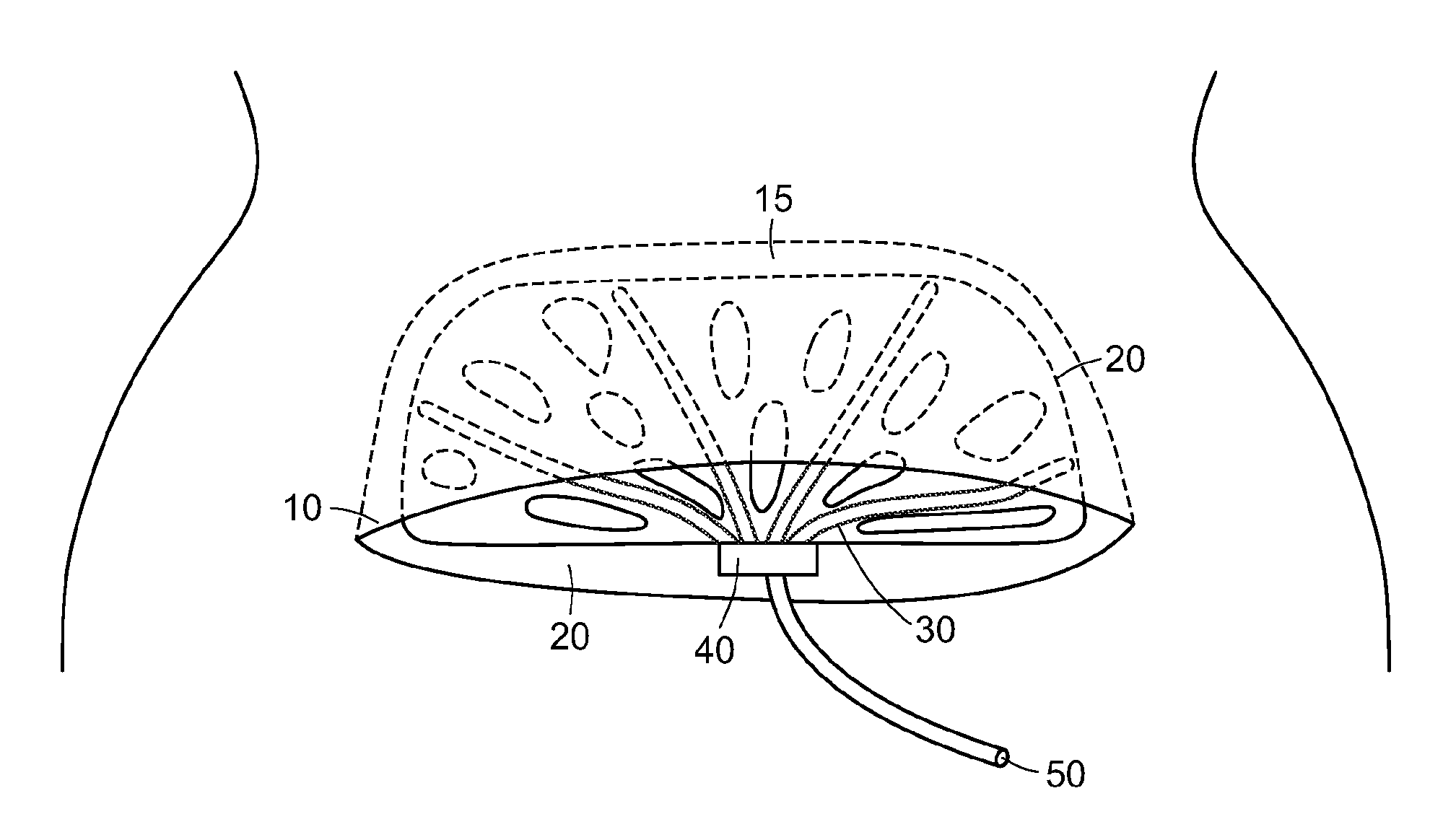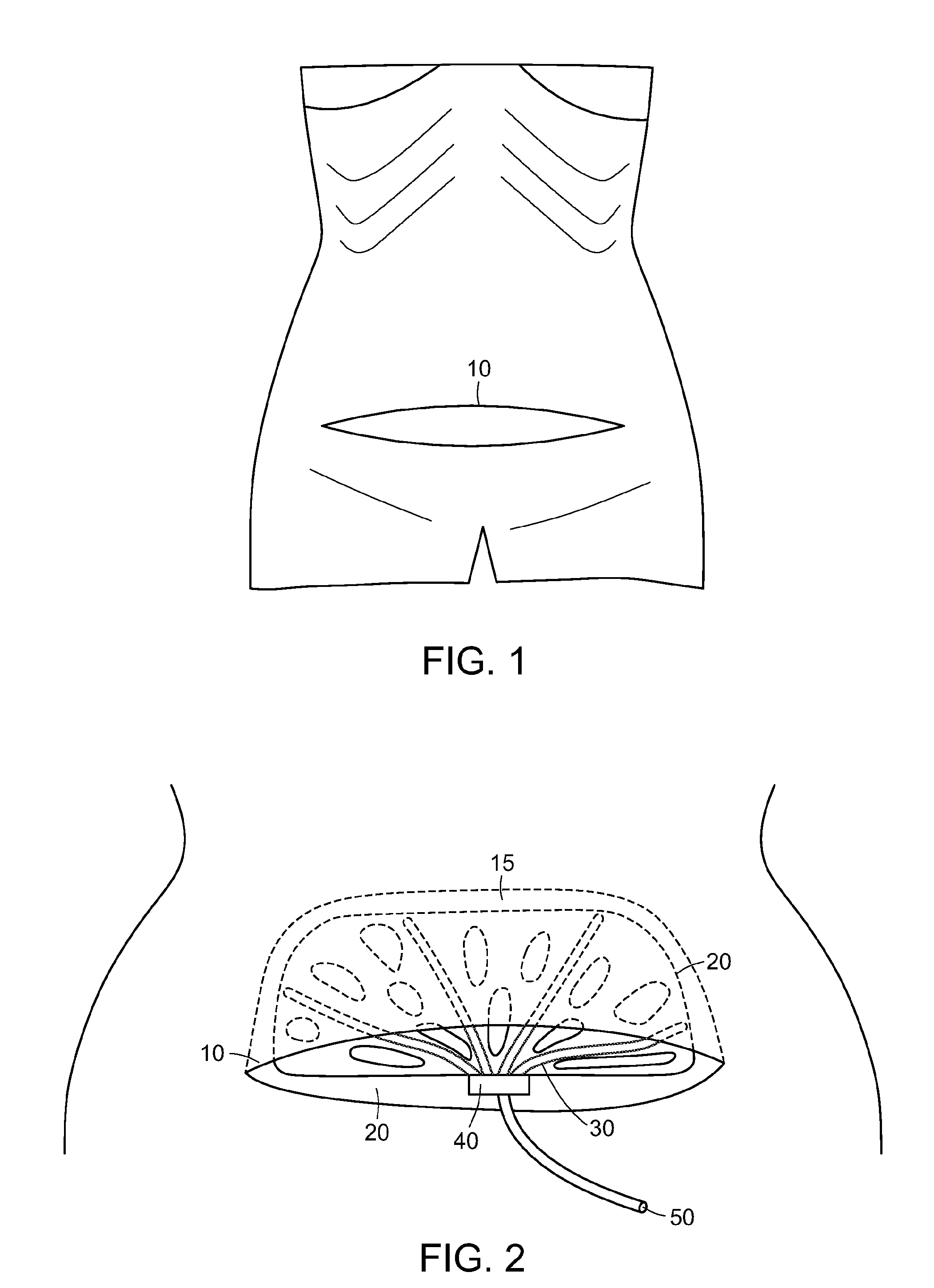Surgical cavity drainage and closure system
a surgical cavity and drainage system technology, applied in the field of surgical cavity drainage and closure system, can solve the problems of limited efficacy of such systems, frequent seroma, and several deficiencies of available surgical drain devices, so as to promote the drainage or closure of surgical wounds, facilitate contact, and treat or prevent seroma.
- Summary
- Abstract
- Description
- Claims
- Application Information
AI Technical Summary
Benefits of technology
Problems solved by technology
Method used
Image
Examples
Embodiment Construction
[0023]The present invention provides a surgical drain device, system, and method that allow fluid to be drained from surgical wounds and promote the healing of the wound. Preferred embodiments are used to prevent or treat seromas, for example. The drain device features a set of drain tubes that are attached to a substrate, herein referred to as an adhesion matrix, that is designed to promote adhesion of tissues within the wound or seroma and to encourage cellular infiltration into the device itself. The drain tubes are distributed across the adhesion matrix to promote even drainage across the device. To promote optimum drainage, the drain tubes can be uniformly distributed across the adhesion matrix. The drainage device can be left in place within the wound for a period of time, e.g., until fluid seepage diminishes, after which the drain tubes can be withdrawn from the device and removed from the patient without disturbing the adhesion matrix, which is left in place to biodegrade or...
PUM
 Login to View More
Login to View More Abstract
Description
Claims
Application Information
 Login to View More
Login to View More - R&D
- Intellectual Property
- Life Sciences
- Materials
- Tech Scout
- Unparalleled Data Quality
- Higher Quality Content
- 60% Fewer Hallucinations
Browse by: Latest US Patents, China's latest patents, Technical Efficacy Thesaurus, Application Domain, Technology Topic, Popular Technical Reports.
© 2025 PatSnap. All rights reserved.Legal|Privacy policy|Modern Slavery Act Transparency Statement|Sitemap|About US| Contact US: help@patsnap.com



